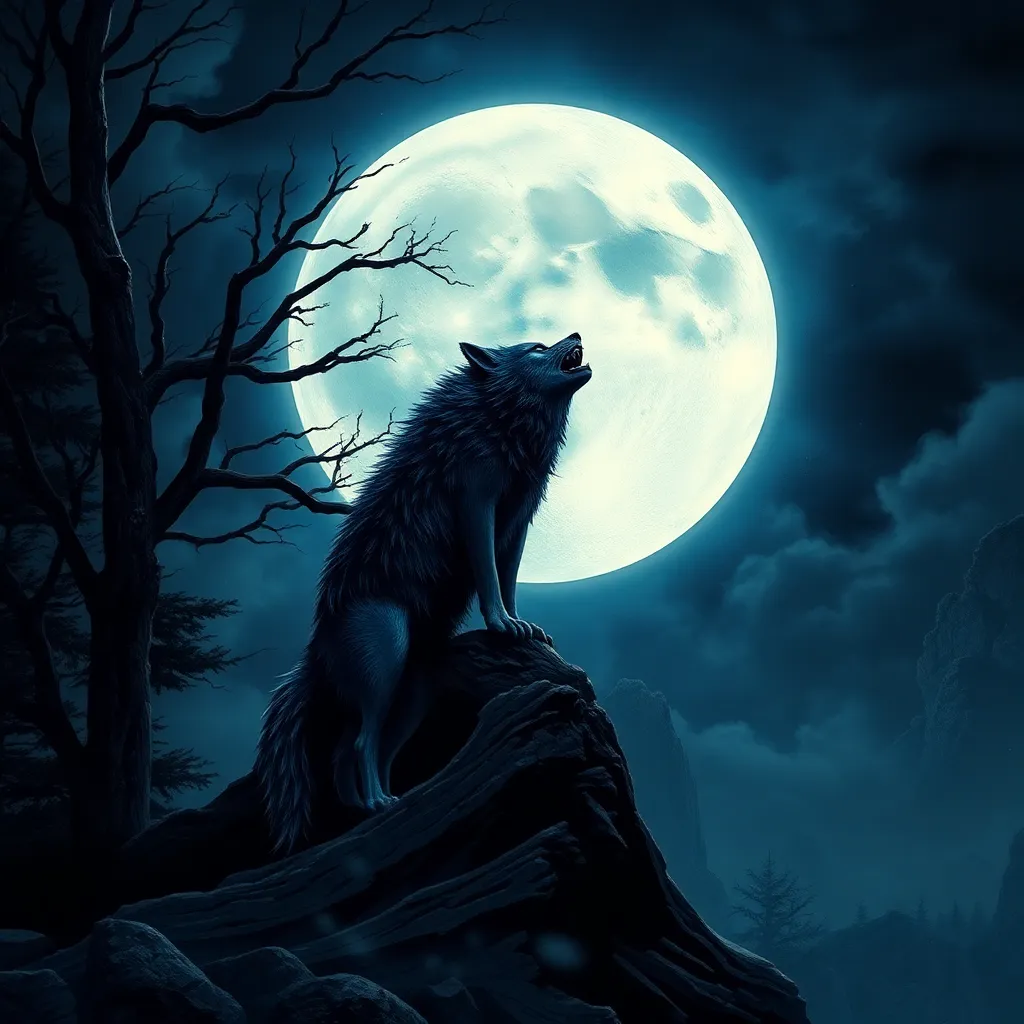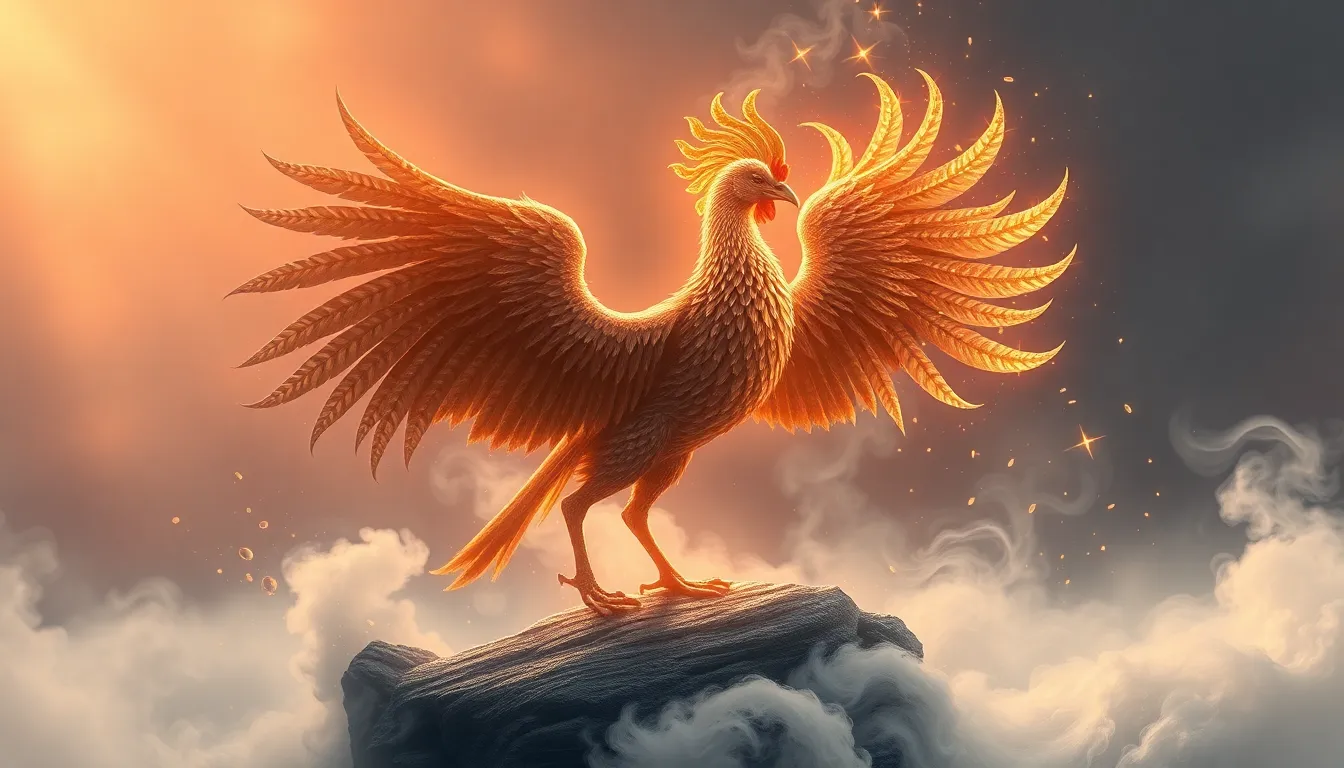The Howling Moon: A Global Anthology of Werewolf Lore
I. Introduction to Werewolf Lore
Werewolf lore has captivated the human imagination for centuries, intertwining themes of transformation, fear, and the mysterious allure of the night. The concept of a human transforming into a wolf, or a wolf-like creature, can be traced back to ancient myths and legends across various cultures.
The origins of werewolf myths can be found in ancient texts, folklore, and the natural human fascination with the duality of man and beast. The term “lycanthropy” derives from the Greek words “lykos,” meaning wolf, and “anthropos,” meaning human. This duality is often represented through the transformative power of the moon, which plays a significant role in many werewolf stories.
This anthology aims to explore the rich tapestry of werewolf lore across the globe, examining historical perspectives, regional variations, cultural impacts, psychological interpretations, modern adaptations, and the continuing legacy of these enduring myths.
II. Historical Perspectives on Werewolves
Throughout history, werewolves have been viewed through various lenses, often reflecting societal fears and beliefs.
A. Ancient Civilizations and Their Views on Lycanthropy
In ancient civilizations, the idea of humans transforming into animals was not uncommon. For instance, the Greeks spoke of the mythical figure Lycaon, who was transformed into a wolf as a punishment by Zeus. Similarly, in Roman times, the poet Ovid wrote about transformations in his work, Metamorphoses.
B. The Role of Folklore in Shaping Werewolf Legends
Folklore has played a crucial role in shaping the werewolf legend. Stories passed down through generations have added layers of complexity to the lore, blending fact with fiction and often serving as cautionary tales. In many cultures, werewolves were seen as symbols of unrestrained passion or moral decay.
C. Notable Historical Cases of Alleged Werewolves
- The case of Peter Stumpp, a 16th-century German farmer who was accused of being a werewolf and executed after a sensational trial.
- The Werewolf of Bedburg, another infamous case, involved a man named Peter Stumpp, who claimed to have the ability to transform into a wolf and was linked to numerous murders.
- In France, during the 18th century, a series of trials were held against individuals accused of lycanthropy, emphasizing the societal fears of witchcraft and the supernatural.
III. Regional Variations in Werewolf Myths
Werewolf myths vary widely across different cultures, each adding its own unique twist to the story.
A. North America: Native American Legends and European Influences
In North America, Native American folklore features various shapeshifters, including the Skinwalkers of Navajo culture, who are believed to have the ability to transform into wolves and other animals. European settlers brought their own werewolf legends, which blended with Indigenous stories to create a rich tapestry of myth.
B. Europe: From Norse Berserkers to Medieval Witch Trials
In Europe, werewolves were often intertwined with Norse mythology. Berserkers, warrior tribes known for their fierce combat style, were said to have worn wolf pelts and believed they could transform into wolves during battle. The medieval period saw a rise in witch trials, where werewolf accusations were often part of larger witchcraft fears.
C. Asia: Unique Interpretations in Chinese and Japanese Folklore
Asian cultures also have their interpretations of werewolf myths. In Chinese folklore, the werewolf concept can be seen in stories of the Jiangshi, a reanimated corpse that preys on the living. In Japan, the Inugami or dog spirit is believed to possess the ability to curse and control humans, often reflecting the cultural attitudes toward animals and their spiritual significance.
IV. The Cultural Impact of Werewolf Stories
Werewolves have left a significant mark on literature, film, and popular culture.
A. Werewolves in Literature: Classic and Contemporary Works
From classic literature like “The Wolfman” to contemporary works such as “Shiver” by Maggie Stiefvater, werewolves have been explored in various narratives that delve into themes of alienation, identity, and the supernatural.
B. The Evolution of Werewolf Portrayals in Film and Television
In film, werewolves have evolved from the horror tropes of the early 20th century to more nuanced characters in modern series like “Teen Wolf” and “The Originals.” This evolution reflects changing societal views on monstrosity and humanity.
C. The Intersection of Werewolf Lore with Other Mythical Creatures
Werewolves often intersect with other mythical creatures such as vampires and witches, creating rich narratives that explore the boundaries between humanity and monstrosity. These crossovers often highlight themes of power, fear, and desire.
V. The Psychology Behind Lycanthropy
Understanding the psychological aspects of lycanthropy can offer insights into human behavior and cultural narratives.
A. Understanding Lycanthropy as a Mental Health Condition
Lycanthropy, in modern clinical terms, can refer to a psychological condition where individuals believe they can transform into wolves or exhibit wolf-like behaviors. This condition reflects deeper issues related to identity and mental health.
B. Symbolism of Transformation and Duality in Human Nature
The transformation into a werewolf symbolizes the struggle between civilization and primal instincts, a duality that resonates with many aspects of human nature. This theme is prevalent in literature and film, exploring the tension between the animalistic and the civilized.
C. The Role of Fear and the Unknown in Shaping Werewolf Narratives
Fear of the unknown is central to werewolf narratives, often manifesting in societal anxieties about the loss of control, the darkness within, and the fear of the other. These fears are reflected in how werewolves are portrayed as both monstrous and tragic figures.
VI. Modern Interpretations and Adaptations
Werewolf myths continue to evolve in contemporary settings, adapting to modern themes and societal changes.
A. The Rise of Urban Fantasy and Werewolf Fiction
The urban fantasy genre has seen a resurgence in werewolf fiction, often portraying werewolves as complex characters navigating contemporary issues such as identity, community, and acceptance. Series like “The Last Werewolf” by Glen Duncan exemplify this trend.
B. The Influence of Social Media on Werewolf Mythology
Social media has transformed how werewolf stories are shared and created, allowing for new interpretations and the emergence of online communities that celebrate werewolf culture. Platforms like TikTok and Instagram have seen the rise of werewolf-themed content, blending myth with modern storytelling.
C. Contemporary Werewolf Communities and Subcultures
Modern werewolf subcultures, including LARPing (live-action role-playing) and cosplay, allow enthusiasts to embrace the lore in immersive experiences. These communities often explore themes of identity, belonging, and self-expression through the lens of werewolf mythology.
VII. Global Celebrations and Rituals Associated with Werewolves
Across cultures, werewolf lore is celebrated through various rituals and festivals.
A. Festivals and Traditions Celebrating the Full Moon
Many cultures have festivals tied to the lunar cycle, with the full moon often associated with werewolf transformations. Celebrations during the full moon can include rituals, storytelling, and community gatherings that honor the connection between the moon and the wolf.
B. Rituals and Practices Related to Lycanthropy in Different Cultures
Various cultures have rituals aimed at warding off werewolves or invoking their powers. These can include protective charms, specific prayers, or communal rites that reflect the ongoing relevance of werewolf myths in cultural practices.
C. The Role of Werewolves in Contemporary Spiritual Practices
In some modern spiritual practices, werewolves symbolize a connection to nature and the primal self. They are often invoked in rituals aimed at self-discovery, empowerment, and embracing one’s true nature.
VIII. Conclusion: The Enduring Legacy of Werewolf Lore
Werewolf myths continue to resonate in today’s society, reflecting our collective fears, desires, and the complexities of human identity.
A. The Relevance of Werewolf Myths in Today’s Society
As society grap



